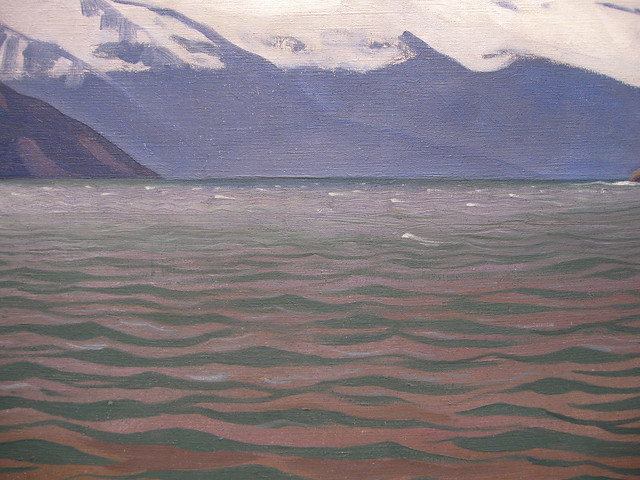 |
| Detail from Rockwell Kent's Seascape (1933-35) |
(I've set up weekly Monday posts through March, but I may post intermittently between them as things come up. This one is too wintry to post after March, when we're no longer getting serious snow. At least, I hope we won't be.)
I recently finished reading Andrea Wulf's Transit of Venus: The Race to Measure the Heavens, which was wonderful and fascinating. In 1761 and 1769, astronomers dispersed all over the world to see Venus cross the sun. They wanted to record how long it took in as many locations as possible so that they could use the differences between their observations to calculate the distance between the earth and the sun - something no one had been able to do before. Many astronomers traveled unimaginable distances and suffered pretty terribly in the name of science. Five of them even died. Jean-Baptiste Chappe d'Auteroche went all the way from Paris to California (which of course involved going all the way around Cape Horn), and set up his observatory where he landed even though there was an outbreak of typhus. There was no time for him to sail further on, and he refused to give up his mission, which he'd started nine months earlier. He was able to make his observation, but couldn't avoid getting the disease and died two months later. Only one person who came on the ship with him survived and managed to get his results back to other scientists. I may have gotten misty-eyed reading that part.
But the part I particularly wanted to share was this description of Anders Planman's trip to Kajana in eastern Finland to observe the transit of Venus in 1761, because of the rather incredible images of the frozen waves and the bursting trees:
"To reach Finland, he had to cross the frozen Gulf of Bothnia by sledge, but the severe winter had laid an unusually thick blanket of snow over Scandinavia. The whipping waves had congealed into a frosted picture, as if someone had snapped a finger to stop the world. In place of a smooth surface the Gulf of Bothnia was a treacherous icescape of 'superb stalactites of a blue green color'. Though stunningly beautiful, it made for dangerous travelling. Sledges had to follow hardened lines of the waves, regularly overturning when one side would suddenly be 'raised perpendicularly in the air'. Wrapped up in thick pelts, the passengers were often catapulted out of their sledges like furry cannonballs and the horses then galloped off, scared, as another traveller described, 'at the sight of what they supposed to be a bear or wolf rolling on the ice.'
"By the time Planman arrived in Abo on the Finnish side of the Gulf of Bothnia, he was so ill that he was forced to rest for three weeks until he recovered his strength. To make up for lost time, he then travelled day and night through lonely forests towards Kajana. There was a "dreary silence," other travellers remarked, the only noise the erratic choir of bursting bark which exploded with a bang when a tree's sap froze and expanded."
If this doesn't make you feel warmer in your house, no matter how leaky your windows are, read it again!

No comments:
Post a Comment